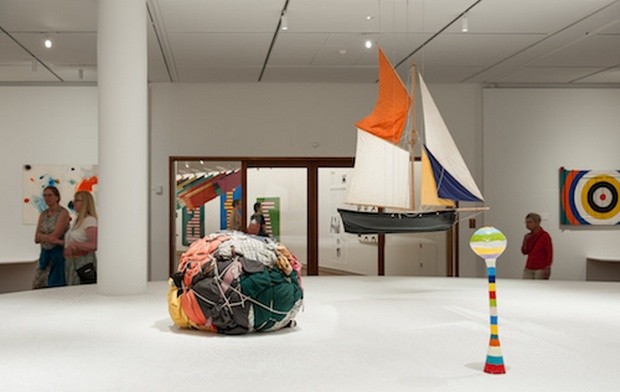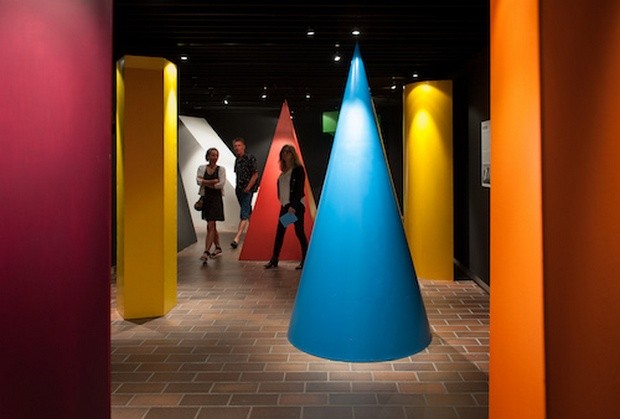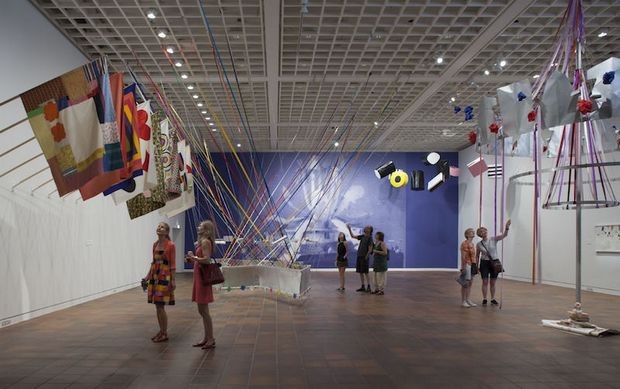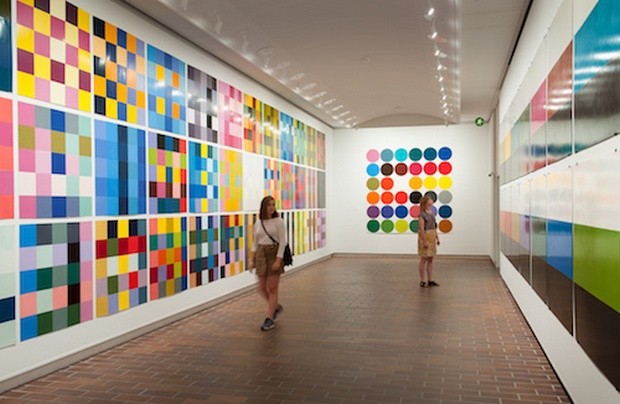Poul Gernes
I cannot do it alone—want to join in?
02 Jun - 16 Oct 2016
POUL GERNES
I cannot do it alone—want to join in?
2 June - 16 October 2016
Cool, colorful, provocative, wildly experimental and visionary - Louisiana’s exhibition on Poul Gernes was a powerful humorous, beautiful and ambiguous story about one of the truly great Danish artists of the post-war generation.
Poul Gernes (1925-1996) is widely known for his large public decorations such as the Palads Cinema in Copenhagen and Herlev Hospital—the latter being Denmark’s biggest artwork. Today, Gernes appears both as a colorful and optimistic designer and as the inveterate critic of capitalism, but also as a pioneer of a new conception of art and the artist’s role in society.
With this extensive exhibition, Louisiana wanted to point to several possible entry points to the experience of Gernes’ art. We were introduced to both the artist with an exceptional talent for making large, effective images, and on the other hand a Gernes with a rigorously experimental practice, in which art, in keeping with the reorientations of the 1960s, should be torn down from the easels and engage others—the people, all of us—to help carry out the works. Or with Gernes’ own words: "I cannot alone—want to join in?"
I cannot do it alone—want to join in?
2 June - 16 October 2016
Cool, colorful, provocative, wildly experimental and visionary - Louisiana’s exhibition on Poul Gernes was a powerful humorous, beautiful and ambiguous story about one of the truly great Danish artists of the post-war generation.
Poul Gernes (1925-1996) is widely known for his large public decorations such as the Palads Cinema in Copenhagen and Herlev Hospital—the latter being Denmark’s biggest artwork. Today, Gernes appears both as a colorful and optimistic designer and as the inveterate critic of capitalism, but also as a pioneer of a new conception of art and the artist’s role in society.
With this extensive exhibition, Louisiana wanted to point to several possible entry points to the experience of Gernes’ art. We were introduced to both the artist with an exceptional talent for making large, effective images, and on the other hand a Gernes with a rigorously experimental practice, in which art, in keeping with the reorientations of the 1960s, should be torn down from the easels and engage others—the people, all of us—to help carry out the works. Or with Gernes’ own words: "I cannot alone—want to join in?"




